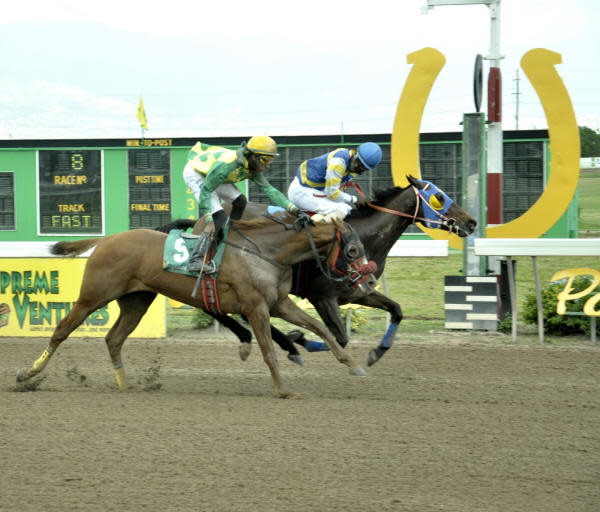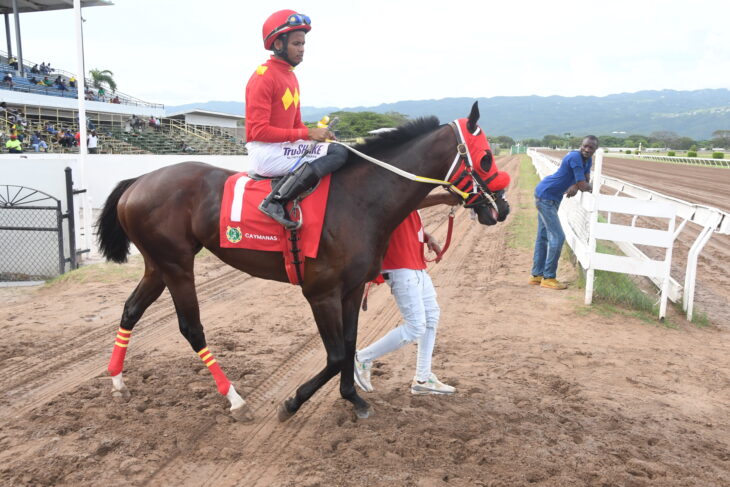
Survivors of last issue’s boring mathematics lesson can now calculate your own Standard (Par) Times and daily Track Variants. Congratulations on your Masters Degree in Speed. Now what?
It’s time for your PhD studies. So you can prepare your own Par Time Table and will be the first in your community able to accurately assess the real time of every race. But, is this enough?
Say Horse A ran at 1200m last time and clocked 1:12.3 on a track with a Track Variant you’ve assessed at +0.2 (fifths of a second) per 200m. Horse B ran 1400m last time in 1:24.0 on a day with a Track Variant (fast) of –0.2 per 200m. Today, they face each other, at similar weights, going 1300m. You can say, with confidence, that A is worth 1:12.2 over 1200 and B 1:24.1+ over 1400 but this begs the question, what’ll either do at 1300? In other words, is 1:12.2 at 1200 better or worse than 1:24.1 at 1400?
My first introduction to speed came, in my early twenties, at the hands of a much older man who was courting my good friend’s mother. His name was Teddy Nosworthy. We called him Uncle Teddy to his face and the much more colourful and satisfying “Nosenaught” behind his back. Nosenaught was the first person to suggest to me that you could convert a six furlong (no metrics then) time into a seven furlong time and his method was so simple it appeared brilliant. He divided the six furlong time by six and multiplied it by seven. Voila!
The first time I applied his system, I landed a winner at 18-1 named Sir Clayton (March 8, 1975) and, for the next few months, I stuck to the system like glue until I’d returned all my winnings to the Bookie with interest. It was fun though. My race book was filled with calculations of times at different distances. I went to bed every Friday night supremely confident only to have my hopes dashed Saturday afternoon.
Finally it dawned on me. Why should a horse run the sixth furlong of a six furlong race at exactly the same speed that it ran the first furlong? I couldn’t do it and horses were just as much flesh and blood as I so why should they? It should’ve been obvious to a University student that the further you travel the slower you run but, as they keep saying, common sense is uncommon and rarely found at University.
So, what’s required is a method of comparing times over varying distances so we can convert a 1200m time to 1300m and do the same for a 1400m time.
But how? It’s not hard if you use your noggin because your Par Time Table already tells you what time different grades run at different distances. So begin by picking the grade with the most consistent and reliable Par Times. Personally I use three-year-old maiden special weight standards. Assign an arbitrary “Speed Figure” of (say) 80 to each of that Grade’s Par Times across the Board.
The eagle-eyed among you will notice the shorter time for the 200m between 1200 and 1400 as compared to between 1000 and 1200 which is a numerical confirmation of the track configuration with the straighter nature of the 1200-1400 gap compared with the tight turning nature of the 1000-1200 distance. You’ll also note that the 1200-1300; 1300-1400; 14-00-1500; 1500-1600 differences are progressively slower. If not re-do (or fudge) your calculations.
As the Chinese Chef once said, “Wok the heck, we’re all busy!”
A Par Time Table is the foundation of your Parallel Time Chart which converts times at one distance to another. From this seed will grow your ability to assign speed figures to every performance (up to 1600) which will show you the time any horse can produce at any distance.
Sure, we can calculate that horse A, whose corrected time was 1:15.0 for 1200 should do 1:28.1 for 1400 (using 3yo msw Par Times) but we’d KNOW we are being lazy because a horse that does 1:15.0 for 1200 will cover the additional 200 faster than a horse that clocks 1:16.0.
What we need is to be able to accurately assess the value of the difference between (say) 1:15.0 and 1:16.0 at 1200 as compared to the difference in value between 1:28.1 at 1400 and 1:29.1(which is what we would get if we added the same 13.1seconds to both). Clearly, the difference in values cannot be the same or Graded Stakes Horses would run 200m in the same time as $180,000 claimers.
The way to begin is to accurately assess the real value of a horse that runs 1:15.0 at 1200 over one that runs 1:15.1 and the corresponding difference in value between one that runs 1:28.1 at 1400 and another that runs 1:28.2. It’s clearly more significant to beat your opponent’s time by 1/5th second at 1200 than 1400. Then, 1/5th second at a time, we can calculate the real value of the differentials at 1200 and comparative differentials at other distances. If we could convert all these times to absolute values, then the value 90, for example, would be a value for different times at different distances but would represent the same horse at each.
So we’ve already assigned an arbitrary “Speed Figure” of 80 to 3yo msw Par Times (up to 1600m). Now we calculate the “value” of 1/5th second difference at each distance by converting, (for example) 1:15.0 to 375 fifths of a second (75 seconds×5=375). The “value”, more or less, of 1/5th second at that distance ought to be 1/375 or 0.00267. Rather than subtract such an awkward number from 80 to get the Speed Figure assigned to 1:15.1 we “rationalize” the number to 2.67 (just shift the decimal point) and round it off to 3. Now 1:15.1 becomes 77.
At say 1300m+ the differential values tend to decrease. So 1/5th second at 1400 would value 1/445 (using the same system) or 0.00224. Shifting the decimal point (again) and rounding down the added/subtracted value for 1/5th second would be 2 not 3. So a horse running 1:15.0 for 1200 (speed figure 80) would run 1:28.1 at 1400 (80) but 1:14.4 at 1200 (83) would be 1/10th of a second faster than 1:28.0 (82) at 1400.
The lazy man’s way to continue would be to add/subtract 3 points for each fifth of a second differential in sprints and 2 points beyond 1200m. The anal way is to do separate calculations for each fifth differential at every distance. Either method is valid (I adopt the lazy man’s approach) because we are working with relative numbers not absolute.
A word to the wise: In the beginning, there’ll come upon you a feeling of omnipotence being able to reduce each runner’s potential to one number. Be careful. Horses often refuse to behave as computers. To begin with, Speed Figures are best used to pick winners over the straight course where pure speed is a bigger factor than anywhere else. Their value decreases but they are still very useful up to 1200m. After that, Speed Figures can help eliminate those with no chance and pinpoint the better horses but nothing can substitute for a careful balancing and assessment of pace, class, jockey and trainer factors. And, of course, as the distance increases, weight.
So, go with God.
DEPARTMENTS:
Clocked-In
Abbreviations: CT = “Corrected Time”; TV = “Track Variant” (a calculation of track conditions’ effect on official times to arrive at “real/corrected” times); TVs are expressed in fifths of a second; “minus” (-) means a fast track; “plus” (+) a slow track (e.g -2 is fast by 2/5th second). Variants beside horse’s names represent the difference between its official time and the grade standard.
MAY 14, 2022 [TV+0 (Round)]
UNRULY DUDE (-7) made all on debut (Race 9; 3yo maiden condition; 1200m; TV+0) clocking 1:07.1 on a fair track. The winning time is 4/5th second faster than nw2 and with progress certain he should win again.
Overseas Betting Opportunities (OBOs)
Overseas racing calms down this weekend between after the English/French/Irish Guineas and before the Epsom Derby next weekend. So maybe value seekers could consider leaving the beaten path and backing wunderkind (yes, Nate, “wunderkind”) CARLOS ALCARAZ to win the French Open as perennial favourites Rafa Nadal struggles with injury and Novac Djokovic with sports politics. Alcaraz has been a revelation winning four titles in 2022 already (including in Barcelona and Madrid) beating both Nadal and Djokovic on the way.
Here’s another notebook horse:
CHASSERAL [2yo b.f. Exceed and Excel-Swiss Range (Zamindar)] ran similarly on both lifetime starts in five furlongs fillies events but raced keenly on both occasions; showed promise on debut (3rd of 8); but seemed to lack experience. Her sire is a speed influence but there’s plenty stamina on her dam side so look for her to improve when stepped up in trip.
Good Luck!



